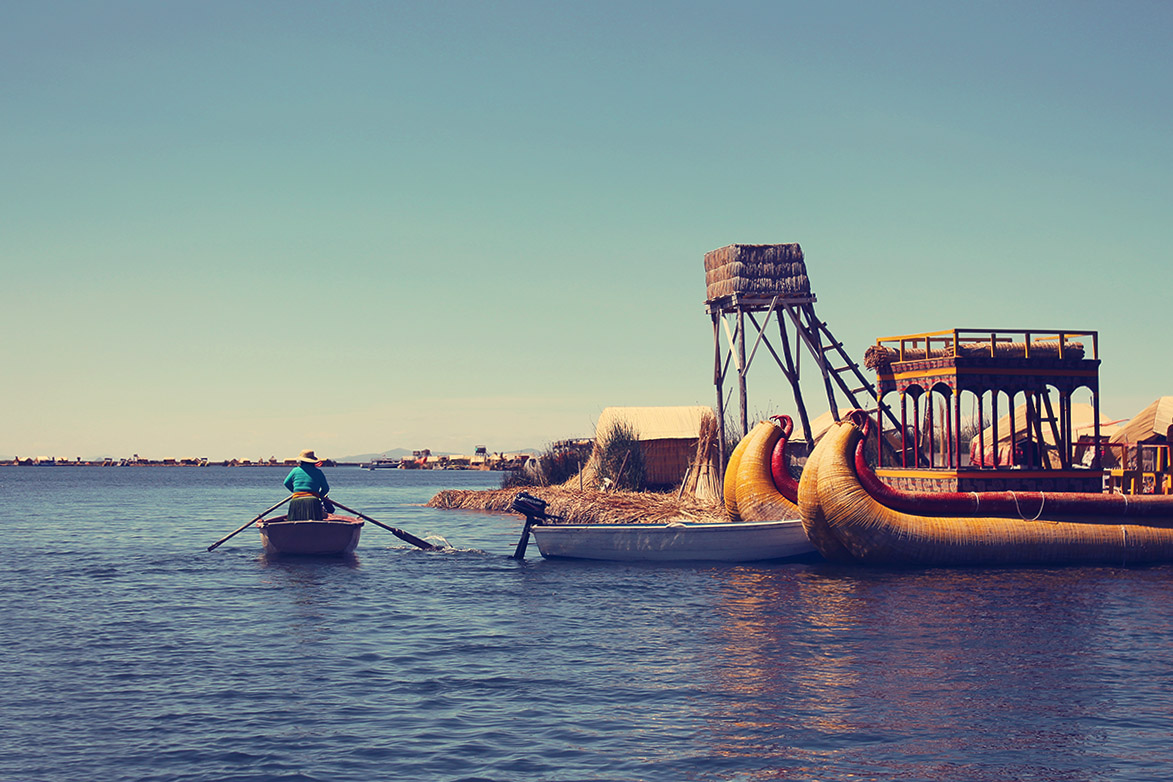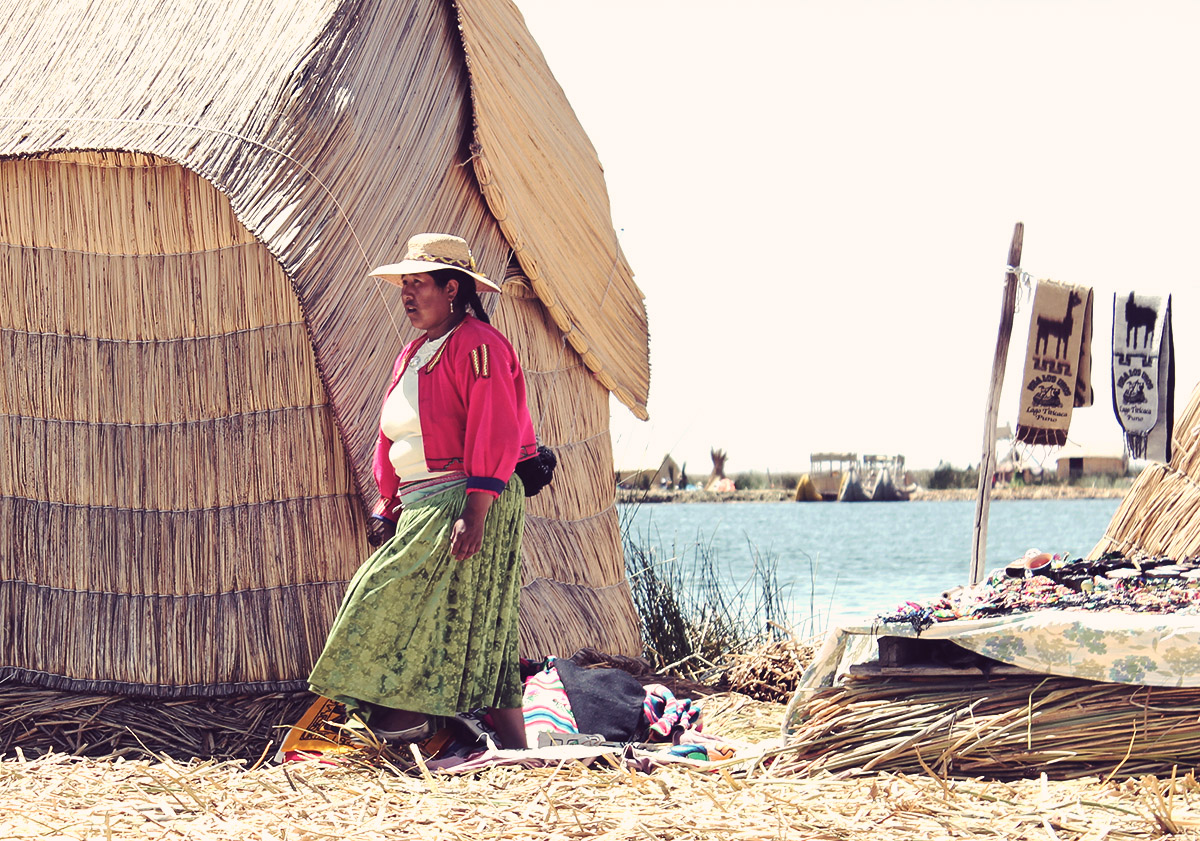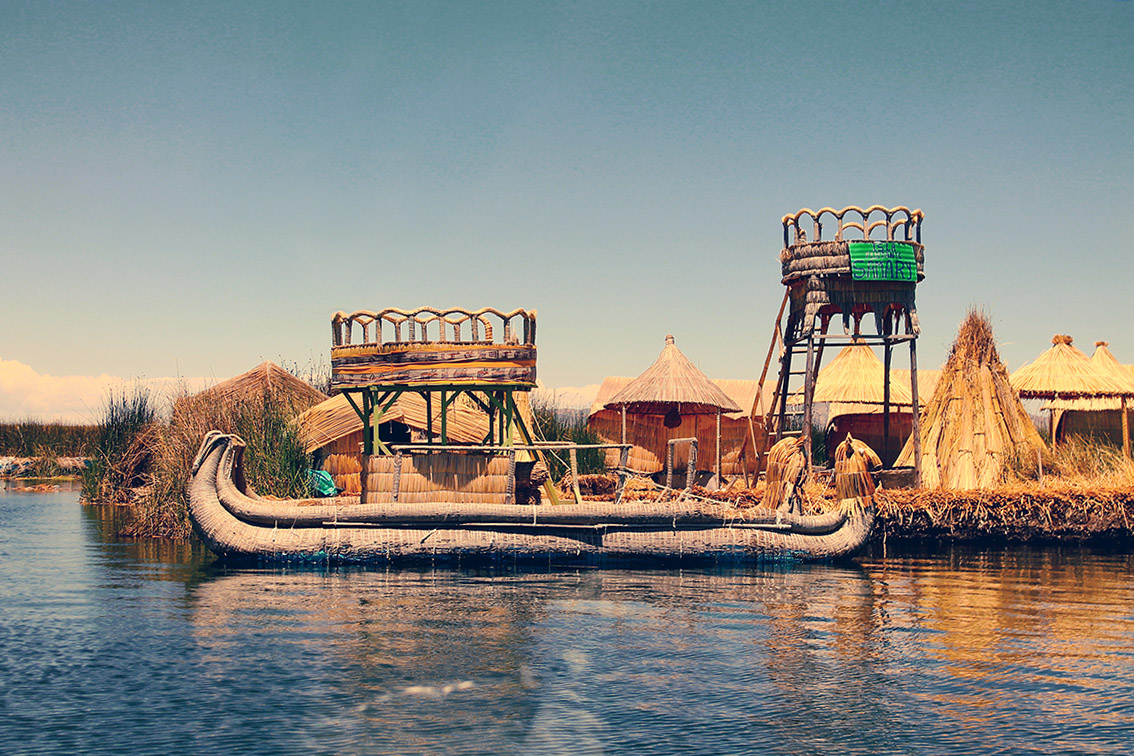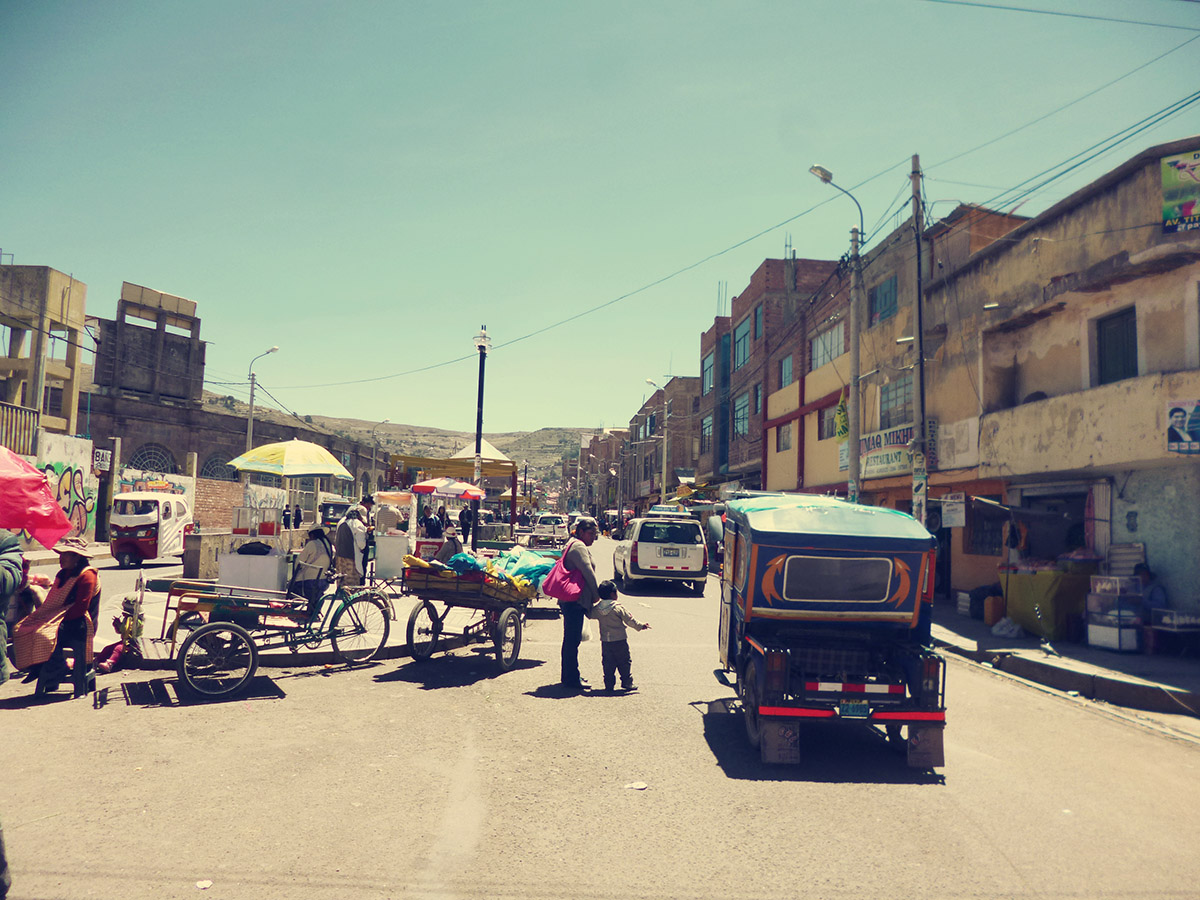Wandering Story: The Floating Islands of Uros
September 20, 2016
The Green Lion
We arrived in Puno before sunrise after a six-hour-long bus ride and headed to our hostel while the sky was still twilit.
At the shore of Lake Titicaca and we quickly found a speedboat which would take us to an island in Uros.
We hopped on the boat and made our way through the stillness and quiet of the fresh lake water. Thirty minutes later, the empty horizons turned into small islands made of reeds. We stared in amazement through the cracked windows at a blissfully unusual world we had never dreamed of before.
Two women greeted us when we got to the island and made us all gather around in a circle to tell us the story behind Uros. She explained to us how the islands and houses are built using only the totora reeds, a plant endemic to South America – a real insight into organic living. I sat and listened in awe. I had never before heard such things. I had never imagined there were people living so simply in this century. They spoke to us in a broken Spanish about cooking, how they survive in these islands and how they keep them floating, defying the passing of time.
We learned about the Uru people, about their customs and traditions. We were explained how wedding ceremonies are held by putting four islands together, where the bride and guests will wait for the groom to ride a boat around the eighty-seven islands to prove his love.
After the absorbing introduction, we were given thirty minutes to explore and we walked around with a waterbed-like feeling beneath our feet. I was so in love with the place that I took pictures non-stop while my mind overflowed with fascination, soaking in the idyllic beauty and vibrant colours around me.
At the same time, I wondered if this was just a far-fetched, made-up fantasy to attract tourists and people willing to pay to see a different reality. I looked behind their tiny houses and saw their laundry hanging from a clothes line and suddenly I realized it’s all real and these people open up their lives to us and in exchange, our money provides them with things they could not easily find in their world and must be obtained by traveling into Puno.
It was time to board a paddled reed boat, which the Uros refer to as the “Mercedes Benz”. The daughter of the man who was leading the boat was there; her singing voice and joyful eyes accompanied us all the way to the next island.
After everyone had gotten off, I asked the “captain” if he could take some pictures of us in front of the “Mercedes Benz”. I tend not to photograph myself on travels but I made a promise to myself that Peru would be different as well as all my travels ahead. For a long time I tried to maintain my imaginary “not-a-tourist-but-a-traveller” badge only to come back home with no concrete memories to look back on other than the ones in my head.
And I am glad I did; these pictures channel the happiness we felt and the extraordinary time we spent together. They are my favorite from the trip; even more so than the ones where I tried to portray the rawness of the place and purity of its people and lifestyle. These images have no artistic value, but they encapture genuine warmth and joy.
We talked with this man after some very crooked pictures were taken. He explained to us how the education system in the islands works; they educate the kids on a separate island while the older ones go to the mainland to pursue higher education. I couldn’t help but picturing how my childhood would have been had I been born there. A life so simple and free from the roars and grayness of the place I grew up in.
We had lunch in the island and wrote some postcards. A bit later, we were back in the dirty streets of Puno again. I hardly remember what we did the next few hours so I will fast-forward to sunset.
Walking lakeside looking for a place to watch the sun setting from the sky, we found a bench that overlooked the lake and made it our spot. The next thirty minutes all we did was talk and laugh while the sun disappeared before our eyes. I turned and saw the naked moon on the other side of the sky.
The pinkness of the sky quickly turned into black and we headed back to the center of the city. The streets were overcrowded with vendors that tried to sell us stuff. We found refuge in an art gallery filled with beautiful, psychedelic paintings but cringe-worthy photographs.
Back out in the crowdedness again, we met with our friends Kathi and Patrick and the German team (and one Mexican) was back together. We drank Pisco Sour (a must when you are in Peru) and said our goodbyes before we continued onto Arequipa.
How to do this trip?
Get to Puno
The Uros Islands float over the Peruvian side of Lake Titicaca. Before making your way into the lake, you must first arrive into the nearest town, Puno.
If you plan on getting there by plane, book your flight to Juliaca, a city located 50 kilometers away. Once at the airport, you can take a minibus to Puno.
If your first stop is Cuzco, you can head to Puno by train every other day of the week. This is not a cheap option, but if you have the time and money to spare, it is worth every cent due to the spectacular views it offers. This particular train ride is regarded as one of the most scenic in the world.
The last option is to take a bus. A myriad of lines offer services to and from Puno from different cities and the fares are quite affordable.
Boat to Uros
Once in Puno, you can book a guided tour (this will likely include a trip to Isla Taquile as well). Finding tours is not complicated – you can find a myriad of agencies in the center or at guesthouses and hotels.
Do it yourself: It is also possible to visit the islands independently. Simply walk to the harbour of the lake and you can buy a ferry ticket for 10 soles (true price as of September 2016). You must also pay a 5 soles entry fee to the islands.
Sleep
Puno isn’t short of hotels, guesthouses, and hostels from all price ranges. A personal recommendation is Pirwa Hostels, which offers dorms as well as privates for a reasonable price and is very well-located.
Since a few years ago, it became possible to overnight in the islands. Many families have set up homestays – this is a great way to get immersed into the culture for 15 – 30 soles for a private room (or reed hut, rather).













